Did you hear about the guy who choked out a mountain lion?
Some Colorado-mountain-runner-guy got attacked by a cougar, from behind, and fought back.
The second I read it, (the story made national news, and you’ve likely already heard about it by now,) I thought, “I bet that guy does Brazilian Jiu Jitsu.”
Or martial arts of some sort.
I should know, because last week, within 24 hours, I found myself put in two potentially neck-crushing choke holds, (a rear-naked and a guillotine,) and then a proper sleeper hold, in which I woke up on my knees, facing the mat.
(I hadn’t realized quite how vulnerable our necks are, but there you go.)
We always minimize the risks out there, else how would we leave the house each morning to drive a car, trust the subway, or ski down the hill? (Three people have died at Taos Ski Valley since New Year’s.)
But back to the dude who killed the mountain lion.
Can you just imagine how that scenario played out?
You’re running along, you’re fit, you’re strong, and then you hear something behind you, and it’s the VERY WORST CASE SCENARIO, as it’s a FUCKING MOUNTAIN LION.
It starts biting and scratching you, trying to eat you.
TO EAT YOU.
RED ALERT.
INSTINCTS, KICK INTO OVERDRIVE!
Now, how many of us, even those who go to fighting class on a regular basis, would have the peace of mind to get behind the mountain lion, to take its back, and then crush its windpipe and choke it to death, while practically tasting its fur in your mouth.
Your heart is racing, your mind is thinking, “this can’t be real, this can’t be real.”
But it is real.
You’re choking out a fucking mountain lion, and then it’s dead.
It’s over.
You’ve won. You fought for your life, and he’s dead on the ground.
Now, a story like that is interesting now matter how you tell it. I opened by telling you how it ends, and still we’re fascinated.
I didn’t drag it out, teasing with tension.
Does the mountain lion prevail?
Does our intrepid hippie-mountain-runner-martial-artist-guy get eaten alive, a cougar baby nibbling on his jawbone?
But that’s not how I told it. I lead with the ending…
We all enter the pop-culture-continuum at different times, but I remember when I first saw “Reservoir Dogs,” as an 18-year-old, and was introduced by Quentin Tarantino to non-linear narrative.
Just last week, in this very column, I said that a good book should have a beginning, a middle and an end.
Just last week.
But today, I think it’s important to consider the alternatives, like non-linear, repeating, or reverse narratives.
It’s easy to think of movies, like “Pulp Fiction,” “Memento,” “12 Monkeys,” or “Looper.” (Man, what is it with Bruce Willis and weird-ass narratives?)
Given how many books I see, sometimes it’s fair to wonder, is the artist thinking two ways here?
That’s certainly what I came away pondering, after looking several times at the excellent photobook “After the Fact,” by Tony Fouhse, published by his company, Starlight Press, in Ottawa.
(This is the winter of the Canadians, I guess.)
The cover is a dream-scape in silhouette of black on blue, with ravens and a tree and the sky.
This will be a repeating motif within, birds, and while I was OK with it, maybe it did seem a bit obvious.
Open it up, and there’s a globe. The North Atlantic Sea is prominent, and I think it’s a pretty damn smart way to ground the story.
Then, a disaffected portrait of a tall guy crammed under a short ceiling.
Then bleak, cold, yet undeniably beautiful landscapes of what I take to be Canada in Winter.
We start with a smart quote by Bertolt Brecht about singing in the face of darkness, which I took to mean that we need to make our art, to speak our peace, to sing our songs, in particular when we think things are going to shit.
(And of course many people regard our current situation as a particularly dangerous one, relative to the Post World War II era.)
Then, some redacted text, and then a slew of excellent images.
Like I said, the bird theme is a bit on-the-nose for me, and I normally don’t use that expression. But I’d also like to ask that people stop including pictures of trash on the street or sidewalk. (We had them in last week’s book too.)
What do you say, folks?
A moratorium on garbage in the street pictures?
But other than that, the photography is spot on.
The portrait of the dog in the muzzle?
Amazing.
The yellow brick road, the policeman’s gun, the bloody bed, the sad portraits, the public places, it all adds up to a feeling of dread and impending doom.
Impending doom is the same as maybe-not-yet arrived doom. You can feel it coming, but is there still time to affect the outcome? To hope?
There’s a guy in camouflage unfurling a wire of some sort. Mennonite women, a power-company worker at night, more sad portraits, dead-people feet, power washing a building, and then that little girl looking right at you, from the side, like a young-21st-century-Mona-Lisa.
Towards the end, the book’s title page, “After the Fact.”
Then, another quote, this time from Martin Heidegger, “The possible ranks higher than the actual.”
Idealism before realism, I suppose?
Next, another portrait of a guy looking away, (behind the hoodie,) the birds, and a cold Canadian landscape.
A last credits page, which quotes Joe Strummer, “The future is unwritten,” and states, unequivocally, “This book is a work of fiction. The real people, places and incidents portrayed are used fictitiously.”
The end.
Is it, though?
If you open it in the back, and start here, doesn’t the book make just as much sense?
You get opening quotes for context, and you’re explicitly told to see this as a work of visual fiction.
It opens similarly, motif wise, (birds/landscape/dude portrait,) and this way, it includes the title page in the beginning, where it would normally be.
Plus, it’s just so easy to flip-it back to front, given its design.
There are narrative waves and repeating motifs that work just as well this way, and even better, you can reverse direction whenever you want.
It’s a good reminder, perhaps, that we not get too rigid in our thinking. That books should be made this way. Or that.
Book making is a creative endeavor, and I’d like to hope we can continue to be surprised.
As as the Clash dude said, “The future is unwritten.”
Bottom Line: Smart, bleak Canadian story with a reverse narrative
To purchase “After the Fact” click here




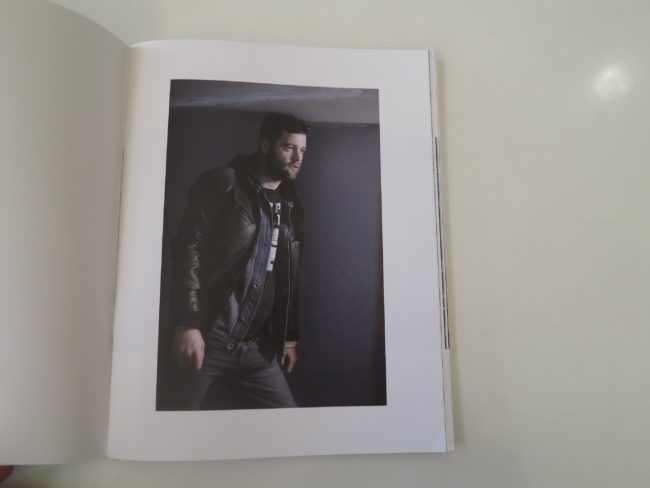

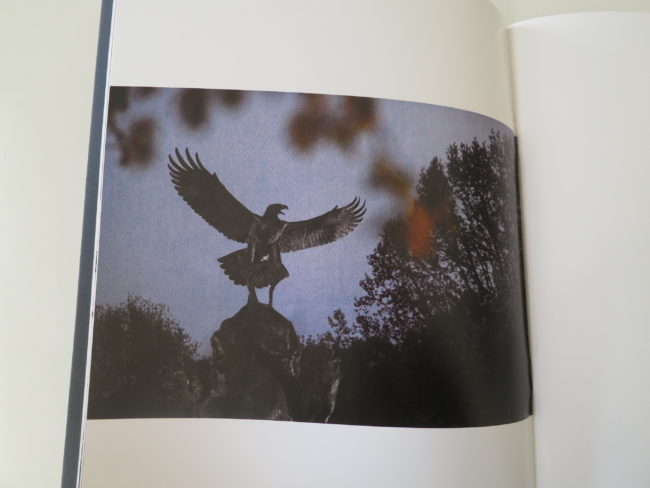
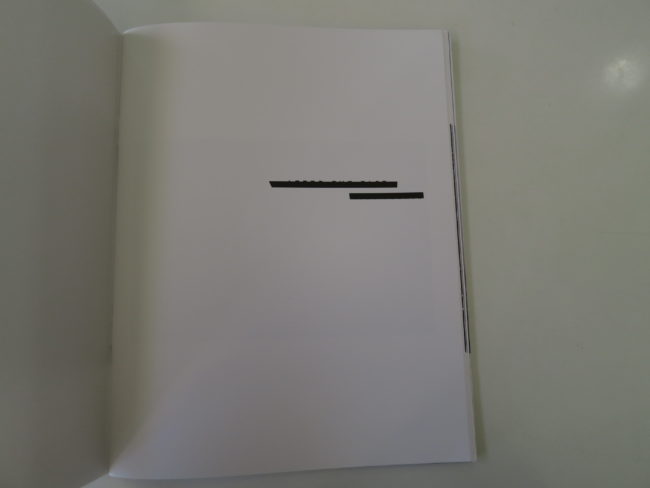
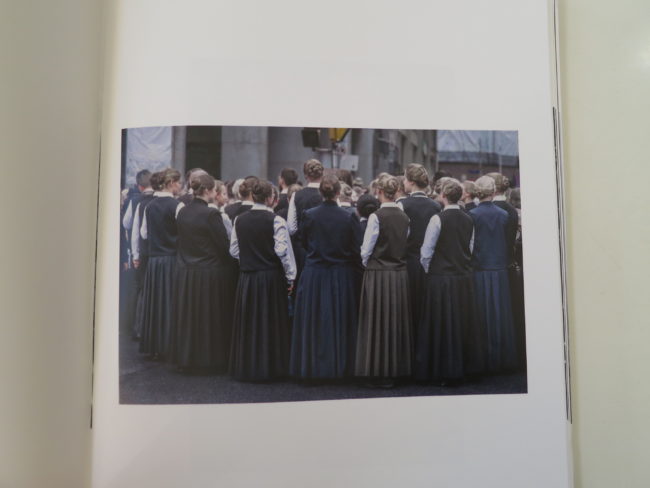

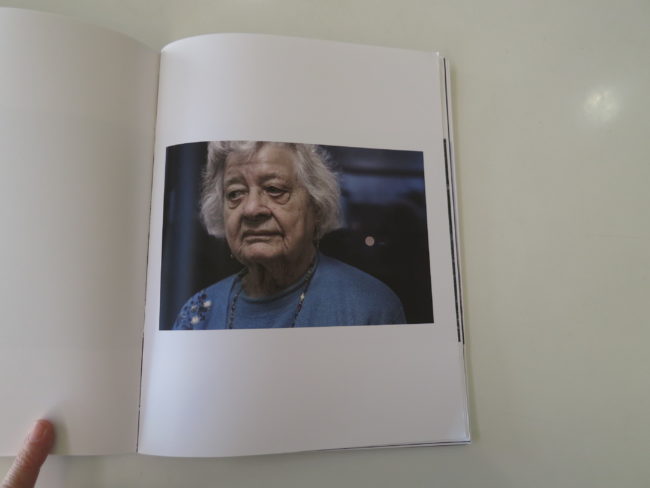

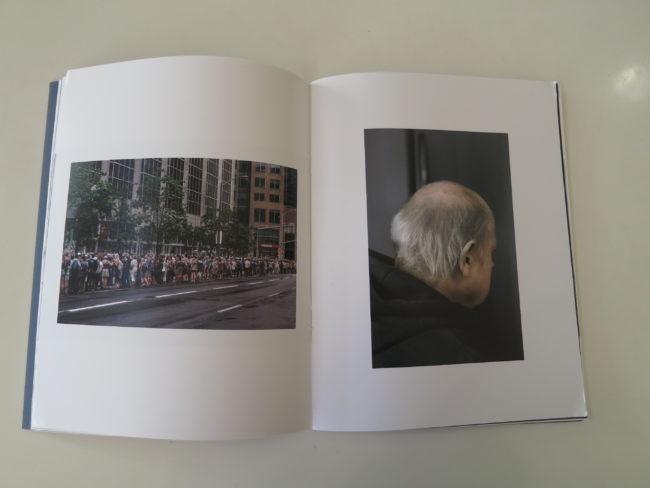
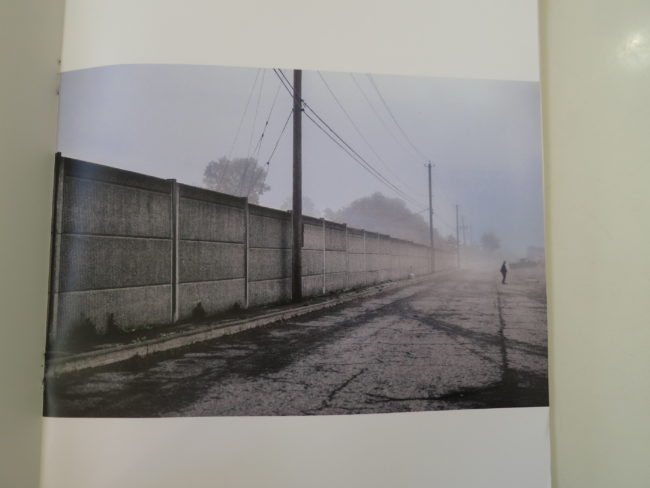

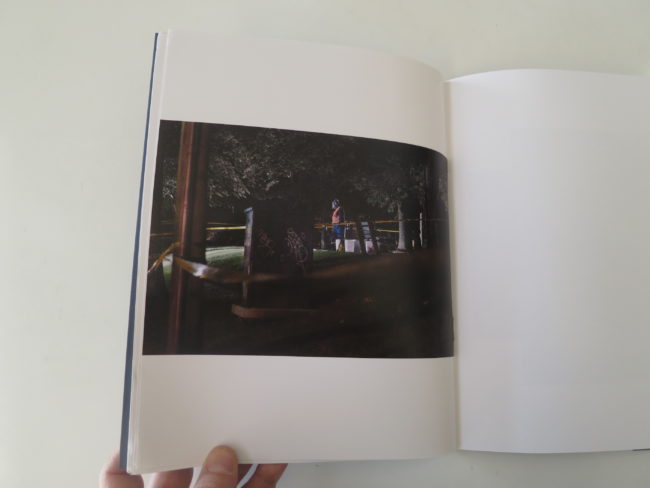
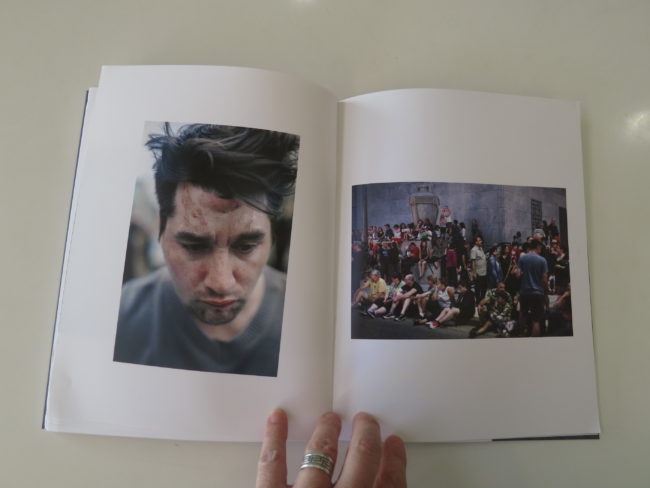

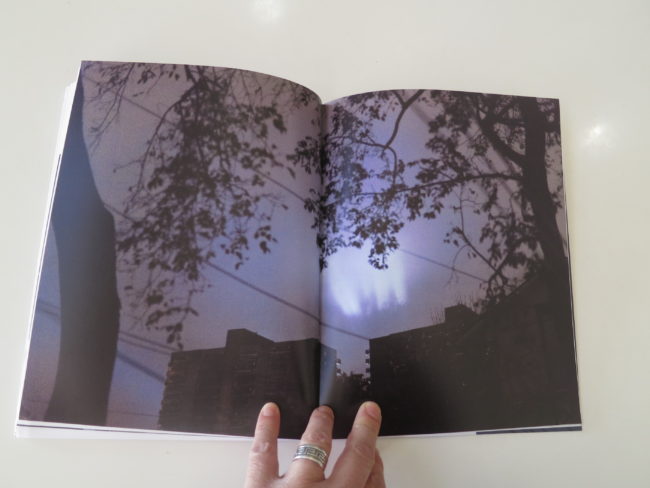
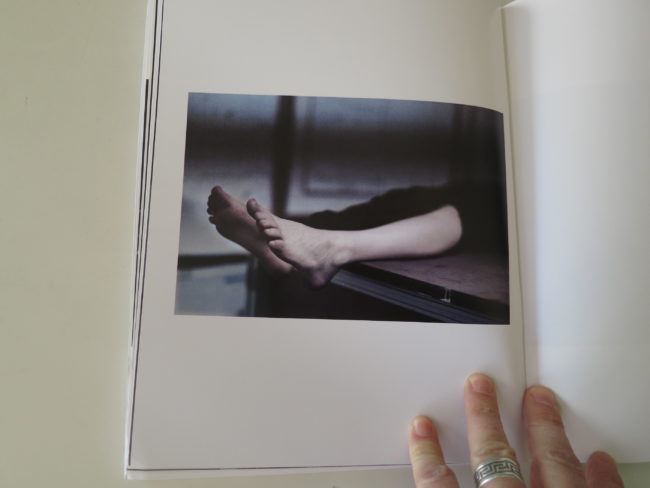

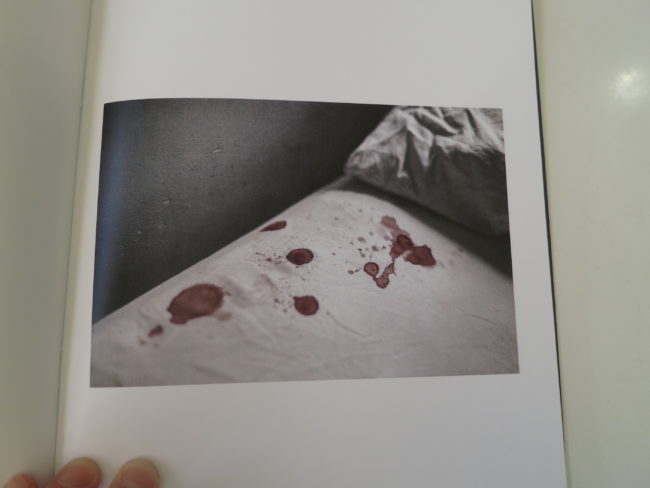

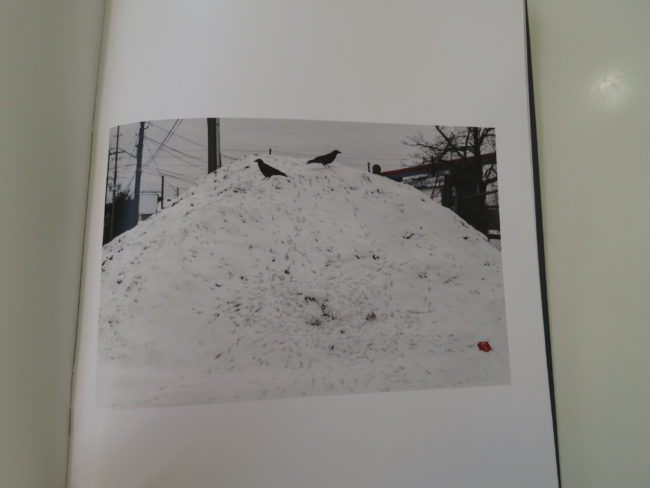
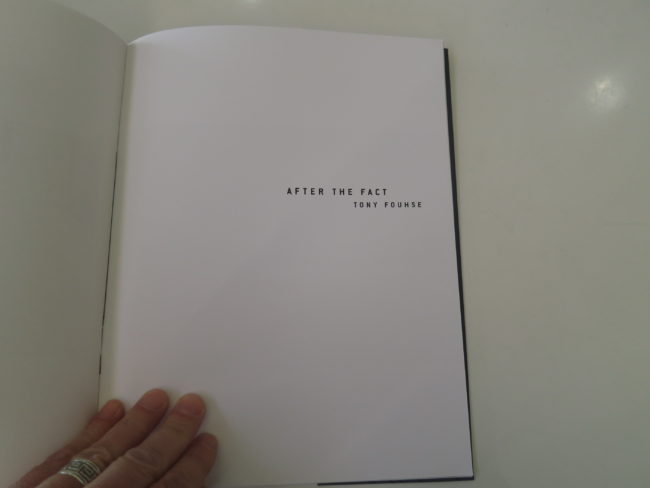
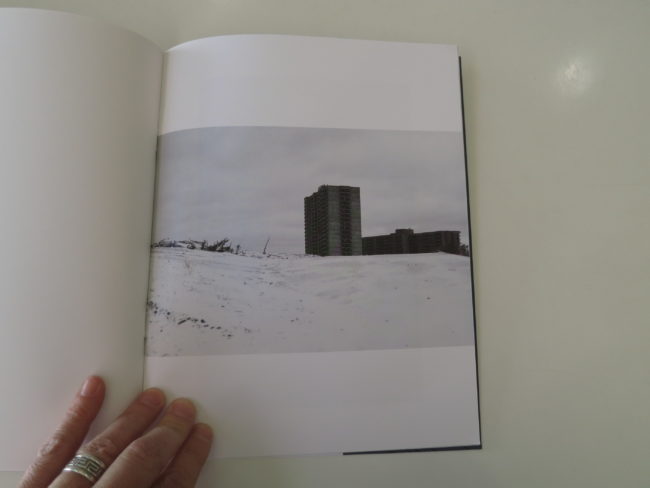

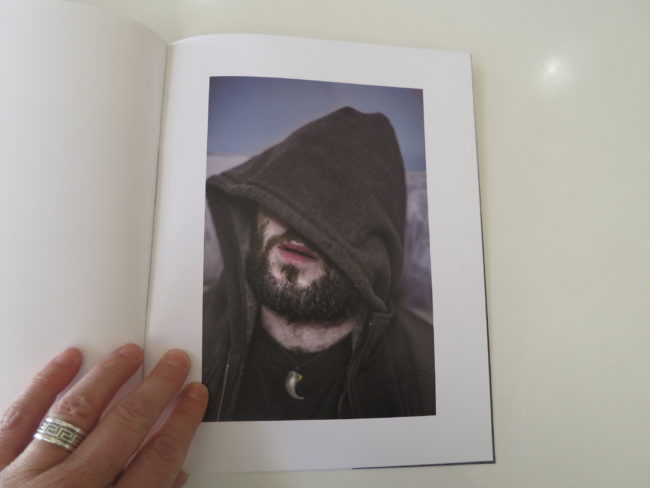
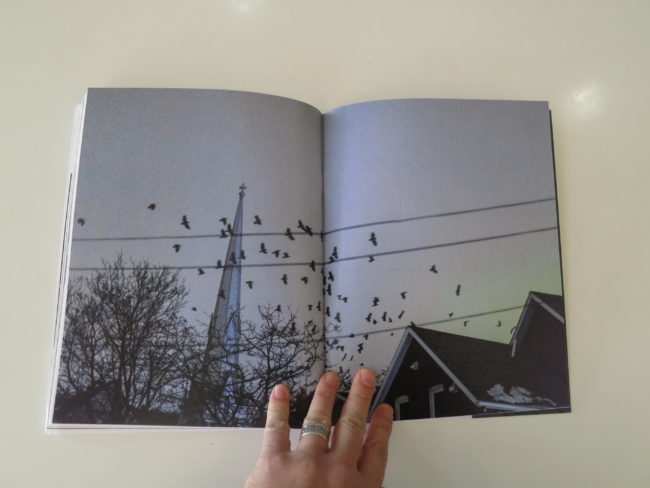
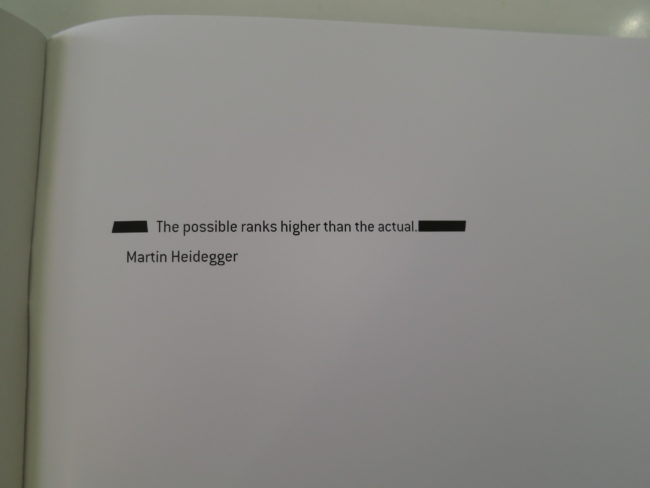
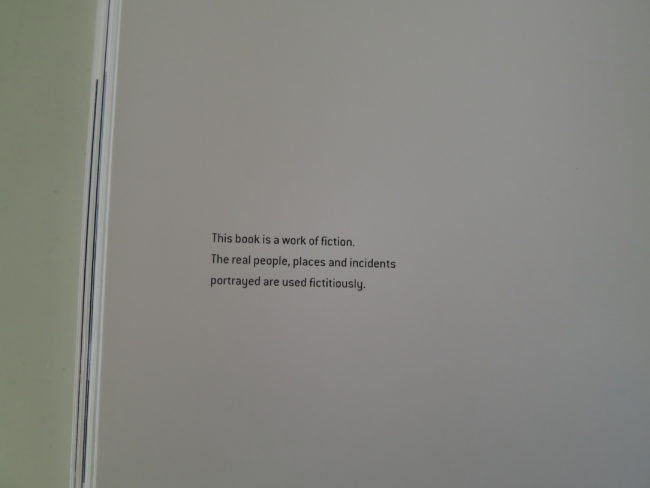

If you’d like to submit a book for potential review, please email me at jonathanblaustein@gmail.com. We currently have a several month backlog, and are particularly interested in submissions from female photographers so we may maintain a balanced program.
1 Comment
Like walking through the premise of an apocalypse- disparate images that allow the viewer’s own dark narrative…
Comments are closed for this article!